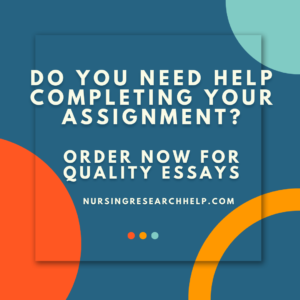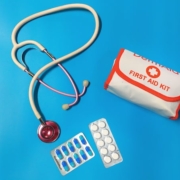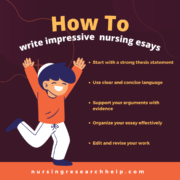Nursing Anatomy and Physiology: 5 Foundations of Comprehensive Patient Care
Nursing Anatomy and Physiology: 5 Foundations of Comprehensive Patient Care
Nursing Anatomy and physiology are foundational branches of medical science that form the bedrock of nursing education. Nurses play a crucial role in patient care, requiring a deep understanding of the human body’s intricate structure and the way it functions. This article aims to explore the significance of nursing anatomy and physiology, shedding light on how this knowledge empowers nurses to provide optimal healthcare. By delving into the key concepts, systems, and processes, we will highlight the practical applications of anatomy and physiology in nursing practice.
The Importance of Nursing Anatomy and Physiology:
Nursing Anatomy and physiology serve as the building blocks of nursing education, equipping nurses with a comprehensive understanding of the human body’s structure and functions. This foundational knowledge allows nurses to provide holistic care and make informed decisions in various healthcare settings. Without a solid grasp of anatomy and physiology, nurses would struggle to comprehend the underlying mechanisms of disease processes, assess patients accurately, or effectively communicate with other healthcare professionals.

Patient Assessment:
One of the primary roles of nurses is to conduct thorough patient assessments. Knowledge of nursing anatomy and physiology is vital in recognizing signs and symptoms that may indicate an underlying health issue. For example, understanding the normal range of vital signs, such as heart rate, blood pressure, and respiratory rate, enables nurses to identify deviations from the norm and take appropriate action. By comprehending the interplay between different body systems, nurses can assess patients holistically and provide appropriate interventions.
Effective Communication:
Effective communication is crucial in healthcare settings to ensure accurate exchange of information and collaboration among healthcare professionals. Understanding the terminology of nursing anatomy and physiology enables nurses to communicate effectively with physicians, specialists, and other members of the healthcare team. By speaking a common language, nurses can convey essential patient information, interpret diagnostic results, and contribute to interdisciplinary discussions. This collaboration fosters a cohesive approach to patient care and enhances overall patient outcomes.
Key Concepts in Anatomy and Physiology:
To understand the practical applications of anatomy and physiology in nursing, let’s explore some key concepts within these fields:
1. The Skeletal System:
The skeletal system provides structural support, protects vital organs, and allows for movement. Nurses must understand the composition and functions of bones, as well as the different types of joints and their range of motion. This knowledge helps nurses assess and manage musculoskeletal conditions and injuries. For instance, nurses caring for patients with fractures need to understand the different types of fractures, their implications, and the appropriate interventions required for proper healing.
2. The Muscular System:
The muscular system enables movement, provides stability, and maintains posture. Nurses need to understand the types of muscles, their functions, and how they interact with the skeletal system. This knowledge helps nurses assess muscle strength, identify abnormalities, and provide appropriate interventions. For example, in patients with mobility issues or muscle weakness, nurses can design exercise and rehabilitation plans to promote strength and mobility.
3. The Cardiovascular System:
The cardiovascular system consists of the heart, blood vessels, and blood. Nurses must have a solid understanding of the nursing anatomy and physiology of this system to assess vital signs, recognize cardiovascular disorders, and provide appropriate interventions in emergency situations. This includes knowledge of the cardiac cycle, blood pressure regulation, and the pathophysiology of common cardiovascular conditions such as heart failure, hypertension, and myocardial infarction.
4. The Respiratory System:
The respiratory system is responsible for gas exchange and oxygenation of the body. Nurses need to understand the structure and functions of the lungs, airways, and breathing mechanisms. This knowledge helps nurses assess respiratory status, provide respiratory support, and manage respiratory conditions effectively. Understanding the nursing anatomy and physiology of the respiratory system allows nurses to recognize signs of respiratory distress, administer oxygen therapy, and assist patients with various respiratory interventions, such as chest physiotherapy or inhalation treatments.
5. The Nervous System:
The nervous system coordinates body functions and transmits signals between different parts of the body. Nurses need to understand the structure and functions of the brain, spinal cord, and peripheral nerves. This knowledge enables nurses to assess neurological status, recognize neurological disorders, and provide appropriate care. For example, in patients with stroke or traumatic brain injury, nurses with a solid foundation in nursing anatomy and physiology can identify neurological deficits, monitor changes, and implement appropriate interventions to promote optimal recovery.
Integration of Anatomy and Physiology in Nursing Practice:
The knowledge of nursing anatomy and physiology finds practical application in various aspects of nursing practice:

Medication Administration:
Nurses’ knowledge of nursing anatomy and physiology plays a crucial role in safe medication administration. Understanding the body’s absorption, distribution, metabolism, and excretion processes helps nurses administer medications correctly, assess for potential drug interactions and side effects, and educate patients on medication management. For example, nurses need to be aware of how different medications affect specific body systems, such as cardiac medications that can impact heart rate and blood pressure.
Patient Education:
Nursing Anatomy and physiology concepts are essential for nurses to educate patients about their conditions. By explaining the underlying physiological processes and the impact on the body, nurses empower patients to understand their health conditions better and participate actively in their care. For instance, when caring for patients with diabetes, nurses can explain how insulin works in the body, the importance of blood sugar control, and the potential complications that may arise if glucose levels are not managed properly.
Emergency Response:
In emergency situations, nurses must make quick decisions and provide immediate care. Understanding anatomy and physiology enables nurses to recognize critical symptoms, such as signs of a stroke or cardiac arrest, and respond swiftly with appropriate interventions to stabilize the patient’s condition. This includes performing life-saving measures such as cardiopulmonary resuscitation (CPR), administering emergency medications, and coordinating with the healthcare team to ensure timely interventions.
Surgical Care:
Nurses collaborate with surgical teams to ensure patient safety before, during, and after surgeries. Knowledge of anatomy and physiology allows nurses to anticipate potential complications, assist with pre-operative assessments, monitor patients during surgery, and provide post-operative care. By understanding the anatomy of the surgical site and the physiological impact of surgical procedures, nurses can optimize patient outcomes and contribute to the overall success of the surgical intervention.
Health Promotion:
Nurses play a vital role in health promotion and disease prevention. Understanding anatomy and physiology helps nurses educate patients about lifestyle modifications, early detection of health issues, and the importance of regular check-ups and screenings. For example, nurses can educate patients about the importance of regular exercise for cardiovascular health, the impact of smoking on respiratory function, or the role of proper nutrition in maintaining overall well-being.
Conclusion:
In conclusion, nursing anatomy and physiology are integral components of nursing education and practice. Understanding the intricate details of the human body enables nurses to provide comprehensive care, assess patients accurately, and communicate effectively with healthcare professionals.
This knowledge equips nurses with the tools to administer medication safely, educate patients about their conditions, respond swiftly in emergencies, assist during surgeries, and promote health and wellness. By continually expanding their knowledge in anatomy and physiology, nurses can deliver quality healthcare, improve patient outcomes, and contribute to the advancement of the nursing profession as a whole.

Nursing Assignment Help
At Nursing Research Help, we understand the challenges faced by nursing students when it comes to grasping the complex concepts of anatomy and physiology. That’s why we offer specialized assignment help services tailored to meet the needs of nursing students. Our team of experienced professionals, with a deep understanding of nursing anatomy and physiology, is dedicated to assisting students in achieving academic success.
Whether you need help with assignments, essays, or research papers, our experts will provide you with well-researched, high-quality content that adheres to academic standards and nursing best practices. With our reliable and confidential services, you can confidently focus on your studies and practical training, knowing that your assignments are in capable hands. Let us help you excel in your nursing journey by providing you with the support you need to succeed. Contact us today to learn more about how our assignment help services can benefit you.












